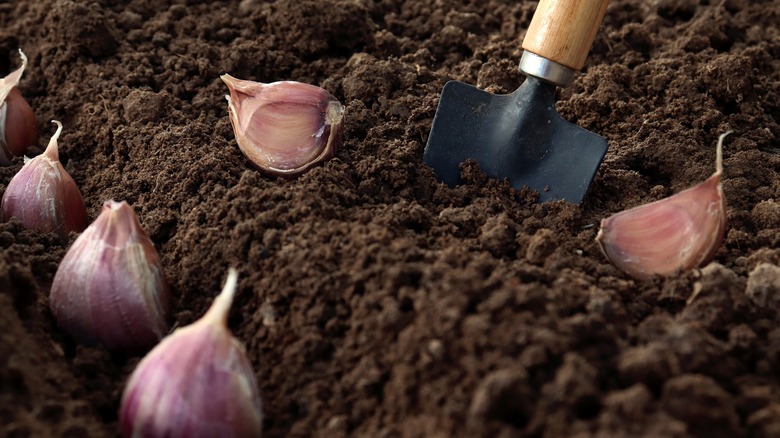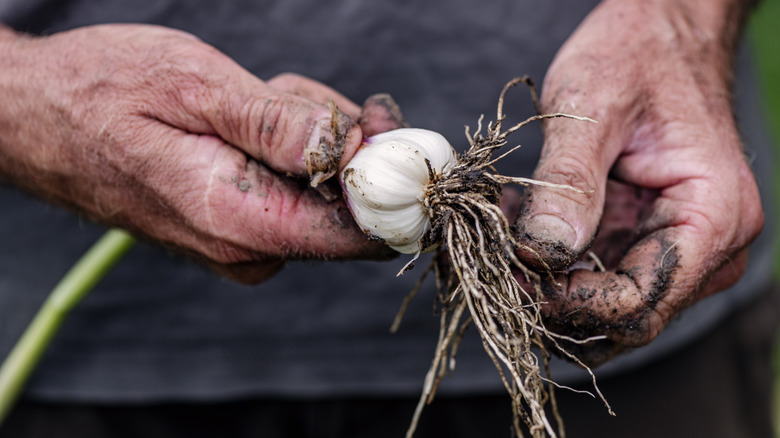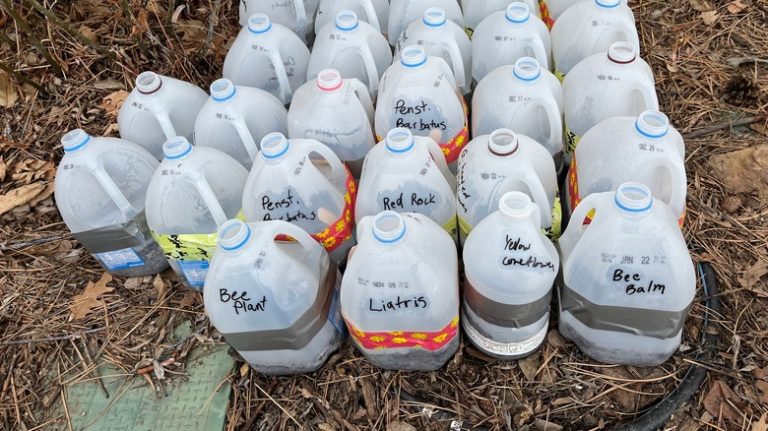Growing your own garlic can be quite a rewarding experience. Aside from warding off local vampires, it allows you complete control over the quality and taste of the crop you consume. By growing garlic, you can ensure it is free from harmful pesticides and chemicals, resulting in a healthier and more flavorful product. Furthermore, growing garlic can be a satisfying and therapeutic activity. It provides an opportunity to connect with nature, engage in physical activity, and learn about the process of plant cultivation — all while in your own backyard. Watching your garlic bulbs grow from cloves to mature plants can be incredibly fulfilling – not to mention rather easy. Nevertheless, if you’re looking to start growing garlic, it’s best not to repurpose cloves from the bulbs at your local grocery store.
Most grocery store garlic comes from China — the largest producer and exporter of garlic worldwide. One of the specific reasons why grocery store garlic wouldn’t grow well if planted in an at-home garden is because it is often treated with growth inhibitors. These growth inhibitors prevent sprouting and extend the shelf life of the garlic. However, this treatment can also inhibit the garlic’s ability to grow and develop properly when planted. Therefore, it is best to avoid using grocery store garlic cloves for planting and instead opt for garlic specifically grown for planting purposes.
Why to avoid growing grocery store garlic

Planting garlic from the grocery store may not yield thriving results in the garden for several reasons. Often, grocery store garlic is sourced from regions with different climates and growing conditions than the local environment where you’d like to plant it. Garlic varieties are adapted to specific climates, and planting bulbs not suited to the local climate can result in poor acclimatization and stunted growth. The garlic may struggle to establish itself, leading to a lack of resilience against local pests, diseases, and environmental stressors. This mismatch in adaptability can impede the garlic’s ability to thrive in the garden, as it may struggle to develop the necessary defenses and resilience needed for optimal growth in its new surroundings.
Secondly, garlic that has been grown elsewhere and then transported to your local grocery store may harbor pests that are not visible to the unseen eye. Planting these bulbs in your garden could introduce foreign pests into your garden, putting the rest of your plants in danger. It’s far better to grow your garlic from seed or a local variety.
Additionally, the storage conditions of store-bought garlic can impact its viability as a planting source. Garlic bulbs may have been stored in conditions that are not conducive to the preservation of their planting potential. Exposure to excessive moisture, temperature fluctuations, or prolonged storage can diminish the garlic’s vigor and hinder its ability to produce healthy shoots and bulbs when planted in the garden.
Types of garlic you should grow

Rather than resorting to grocery store garlic, you should consider what varieties grow best in your climate by consulting the USDA Plant Hardiness Zone Map. For example, ‘Softneck’ garlic, such as the popular ‘Silverskin’ variety, is well-suited for a wide range of climates. It excels in milder winter conditions but can also withstand colder temperatures. Softneck garlic produces a flexible stalk and tends to have a longer shelf life. Its adaptability to varying weather conditions makes it a reliable choice for gardeners across different regions. Softneck varieties typically have many smaller cloves as opposed to Hardneck varieties.
‘Hardneck’ garlic, like the ‘Rocambole’ variety, is known for its robust flavor and adaptability to colder climates. It produces a central stalk called a scape, which, when removed, encourages bulb development. Hardneck varieties often have larger cloves and are well-suited for areas with harsh winters. Their ability to withstand cold temperatures and produce larger, flavorful cloves makes them a preferred choice for many northern regions.
Despite its name, ‘Elephant’ garlic belongs to the leek family but is commonly grown and used like garlic. It features large cloves with a milder taste compared to true garlic varieties. Elephant garlic is well-suited for a variety of climates, including regions with milder winters. Its adaptability, ease of cultivation, and ability to produce large bulbs make it a reliable choice for gardeners in different parts of the United States.



